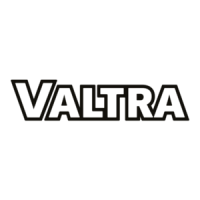• Do not create sparks or have open flame near the battery.
• When using auxiliary batteries or connecting booster cables to start the engine, use the procedure
shown in the operator's manual.
Charge the batteries properly. Batteries emit explosive hydrogen and other vapours when being charged.
• Ventilate the charging area.
• Keep the battery away from sparks, naked flames and other sources of ignition.
• Never charge a frozen battery.
Avoid contact with battery acid. Battery acid can cause burns. Batteries contain sulfuric acid.
• Always wear eye protection when you work with batteries.
• Avoid contact with skin, eyes or clothing. Seek immediate medical assistance if contact occurs.
• Antidote (in case of external contact): rinse with water.
• Antidote (eyes): rinse with water for 15 minutes and call a doctor immediately.
• Antidote (in case of swallowing): drink a lot of water or milk. Do not induce vomiting.
Battery post, terminals, and related accessories contain lead and lead compounds. Wash hands after
handling them.
Follow the manufacturer's instructions when you store and handle batteries.
Keep batteries out of reach of children and other unauthorized persons.
M - Danger of overturning
Do not use the machine on a slope or in other conditions that exceed the limits set out in this manual.
Using the machine beyond these limits may result in roll over or tip over. Follow the recommendations in
this manual. Pay particular attention when travelling on steep slopes with the tractor loaded.
Do not operate the machine on or near verges of ditches, canals, brooks or banks with bottoms that are
loose or dug out by rodents. The machine may sink sideways and roll over.
Do not operate the machine on:
• Unstable crossings or bridges
• Soft surfaces
• Surfaces that cannot hold the weight of the machine
These structures may collapse or give way and cause the machine to overturn.
Always inspect the condition and carrying capacity of bridges and ramps before crossing.
Seat belts are an integral part of the protection against overturning (ROPS) and must be worn at all times.
The operator must be held to the seat inside the frame in order for the protective system to work.
Always observe the machine's dynamic stability limits. Sudden or high-speed manoeuvres increase the risk
of the machine overturning. Driving around bends at high speed or very close to their edges increases the
risk of the machine overturning.
Do not use the machine for towing if the load retention is unknown (for example, when transporting logs).
The machine may flip over backwards if the load doesn't hold.
Be extremely cautious when working with the machine on forage silos without concrete side ditches. Dual
wheels or a wide track setting may improve the lateral stability of the machine.
Remember that the machine's centre of gravity could increase if loads are raised by a front loader or a
three-point hitch. In these conditions, the machine may rollover earlier than expected.
NOTE:
the list provided does not include every possible risk. When using the machine, follow the instructions
provided in this manual.
2. Safety
36 F Series
39940211 (555124)

